Swiss students on the hunt for microplastics in the Alps
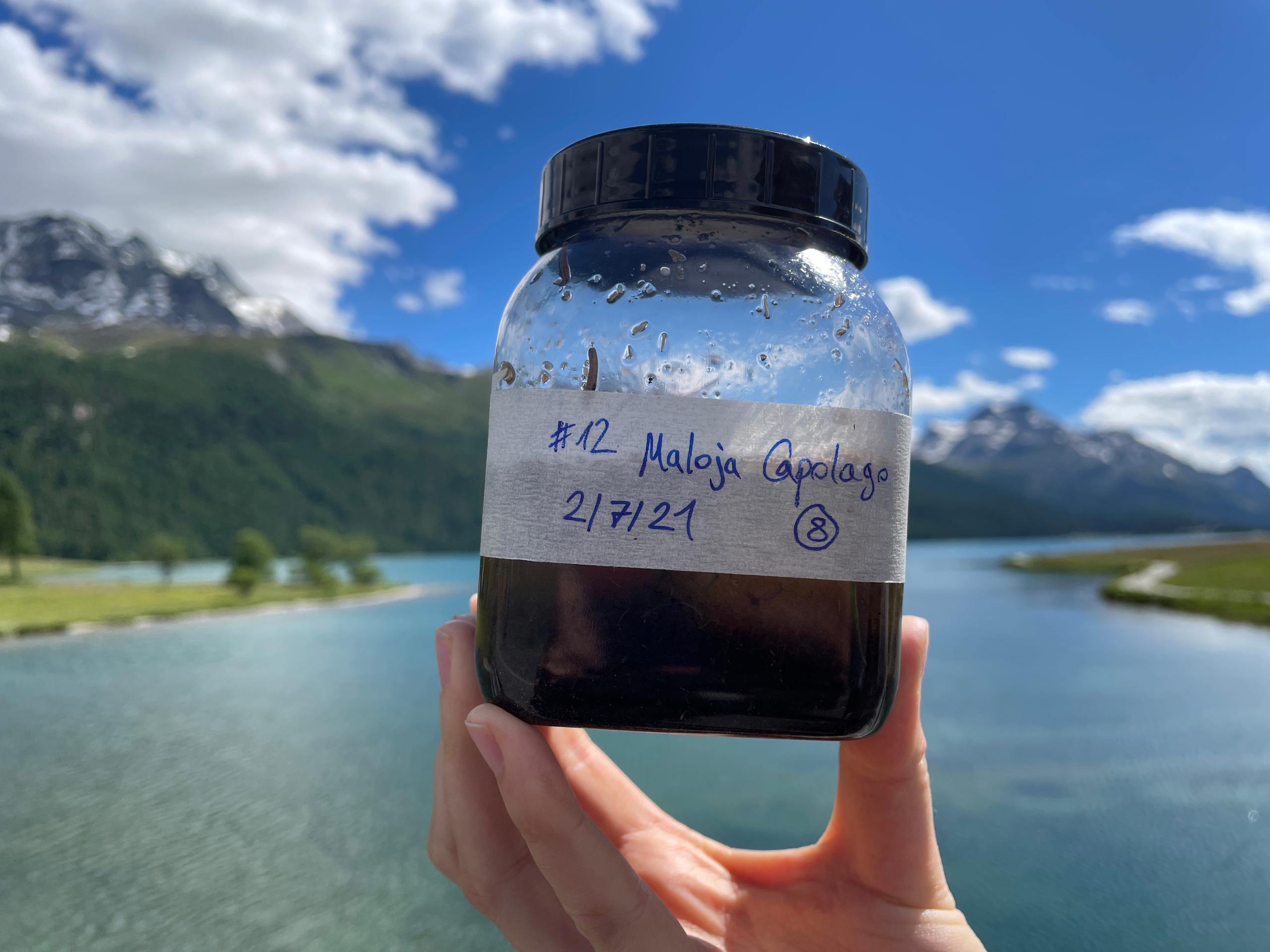
The deep-blue crystal lakes and rivers of Switzerland’s picture-postcard Upper Engadine region look pristine, but could they be transporting minuscule plastic fragments and fibres? A team of Swiss scientists wants to find out.
A line of trucks, 4x4s and motorbikes, caught up in roadworks, inches along the northern shore of Lake St Moritz. Snowy mountain peaks and luxury five-star hotels reflect off the body of water that stretches into the distance.
In one corner, where the River Inn leaves the lake, a winged snake-like object tied to a bridge gently writhes in the slow-moving current.
“We often have to tell curious passers-by that ‘No, we are not trying to catch fish,’” jokes Dave Elsener.
After 30 minutes, the young Zurich scientist hauls up the manta trawl – a plastic and aluminium net system – to inspect today’s “catch”.
Using filtered water, sieves and buckets, he and a colleague slowly wash the sediment, grass, leaves and other materials caught in the trawl’s fine mesh net.
“There, those look like polystyrene beads,” he says, pointing to tiny white dots in the thick brown gunk. He scrapes the debris into a sealed plastic container and pours in the sample of lake water.
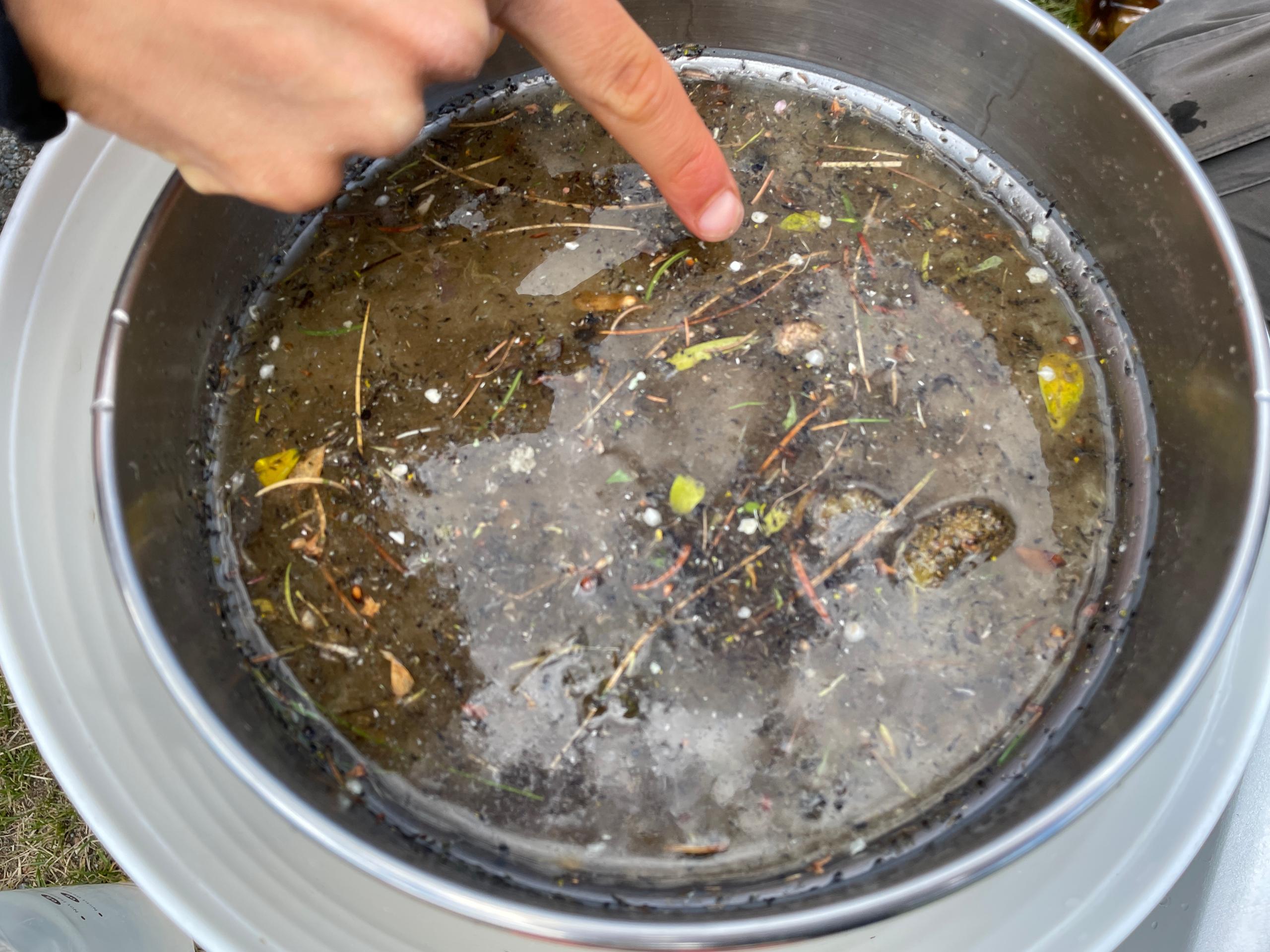
Today is the last of his microplastic “fishing expeditions” to the St Moritz region.
Elsener is part of a team of students from the federal technology institute ETH Zurich who have spent the past three months collecting water samples in the Upper Engadine region for a microplastics research project.
They want to test their hypothesis that microplastics – particles as small as 0.1 millimetres, tinier than the eye can see – are deposited in high Alpine regions like the Upper Engadine in southeast Switzerland.
For their project, the researchers carried out regular sampling at 11 locations in the area, including the source of the River Inn and the Sils, Silvaplana and St Moritz lakes.
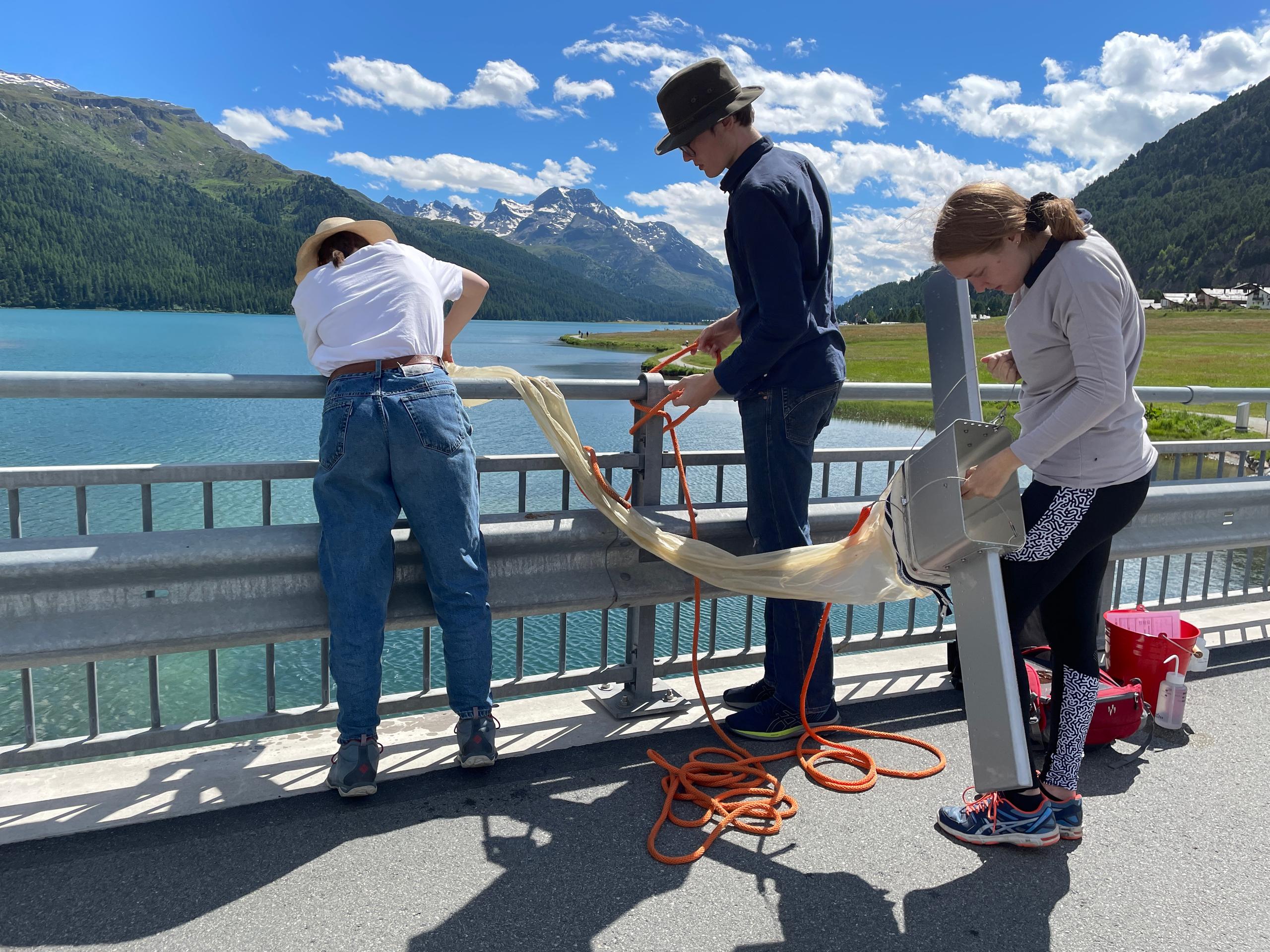
Inside fish and up mountains
This is the first time that such an extensive microplastics study has been carried out over a long period in the Swiss Alps, explains Roman Lehner, who is overseeing the Swiss study. The researcher founded the organisation “Sail & Explore Association”, which conducts microplastics research around the world.
“It is important to carry out a study in Switzerland to show that the problem is not limited to the seas,” says Lehner. “It’s a global problem originating on the land and not in the water.”
Studies from around the world have shown that microplastics exist almost everywhere: in water, soil, fish stomachs, human waste – even near the summit of Everest.External link In Switzerland, around 14,000 tonnes of plastic waste in all sizes end up in soils and waters every year, according to the Federal Office for the Environment. The biggest sources of microplastics are the abrasion and decomposition of plastic products – mainly car tyres, plastic films and other products used in construction and agriculture. Decomposed litter is another source.
Research over the past ten years has identified microplastics in Swiss lakes and rivers in lowland areas, such as Lake Geneva and the River Rhine.
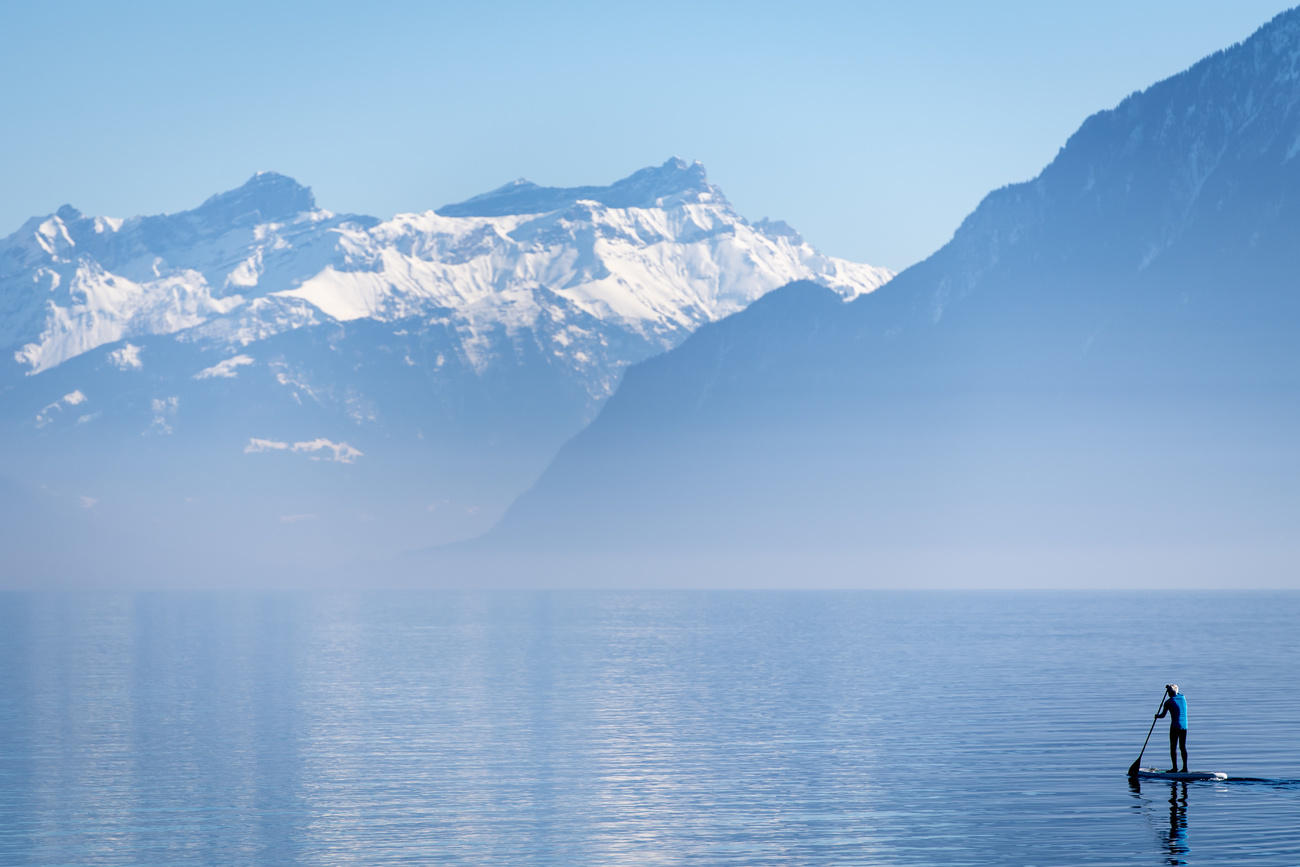
More
Large volumes of microplastics exist in Lake Geneva
Airborne microplastics have also been detected in remote mountainous regionsExternal link. A 2019 studyExternal link in the Arctic, northern Germany, the Bavarian and Swiss Alps (Davos) and the North Sea island of Heligoland found an abundance of microplastics that demonstrated the fragments may become airborne in a way similar to dust, pollen and fine particulate matter, sucked into the atmosphere and carried long distances.
The ETH researchers hope that their Engadine project will help shed light on the extent of the problem in high Alpine regions.
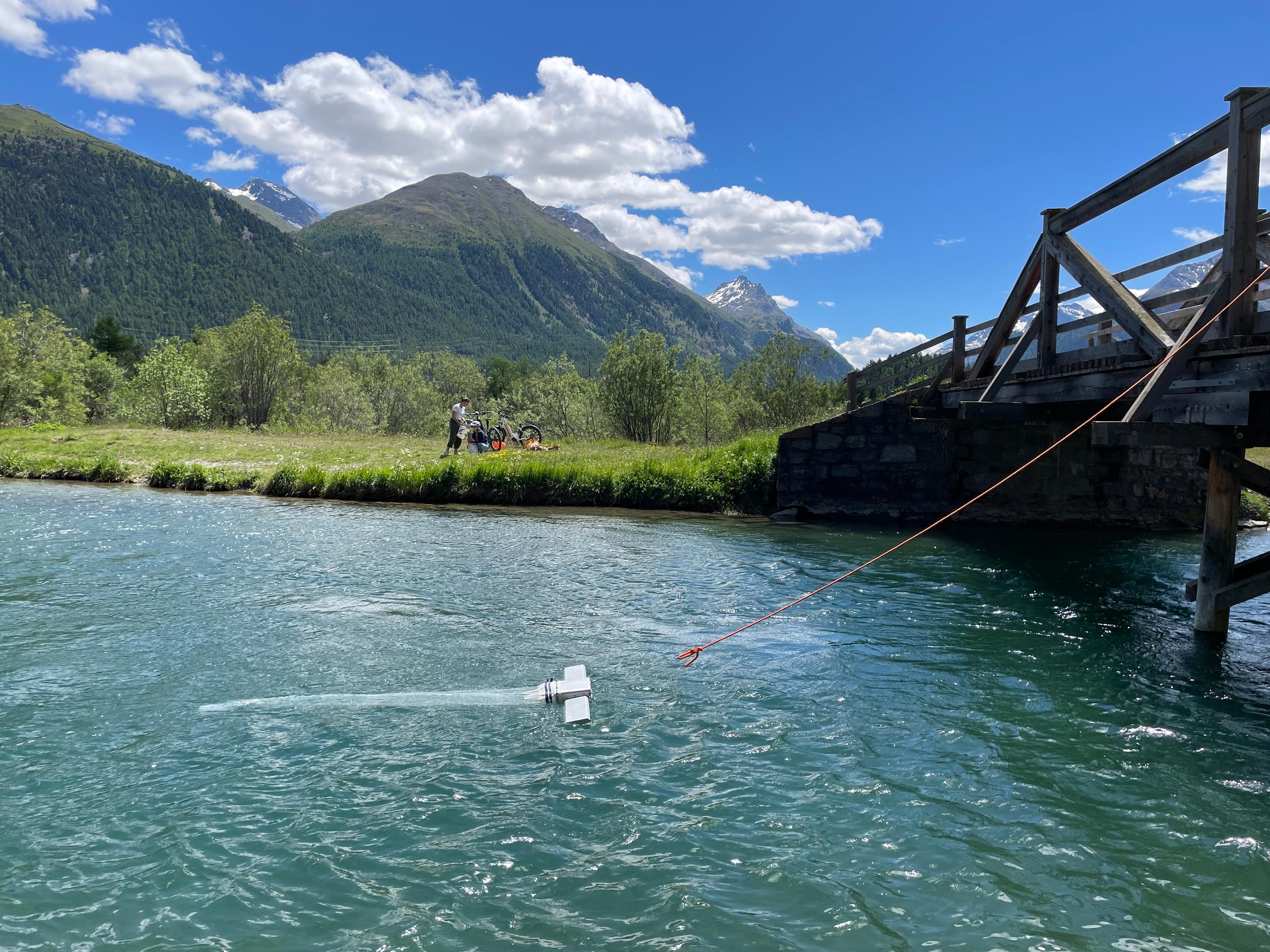
Rubber, textiles and kites?
On a wooden bridge near St Moritz’s famous Cresta Run toboggan track, two students gather samples from the river as people speed past in cars and on electric bikes.
“It’s hard to imagine, but we think microplastics could come from the atmosphere – fibres from textiles for example – or tyre rubber from motorbikes or cars that is washed from the roads by rainwater into the rivers and lakes,” says ETH Zurich student Tessa Stuker.
“We are pretty sure we’ll find something.”
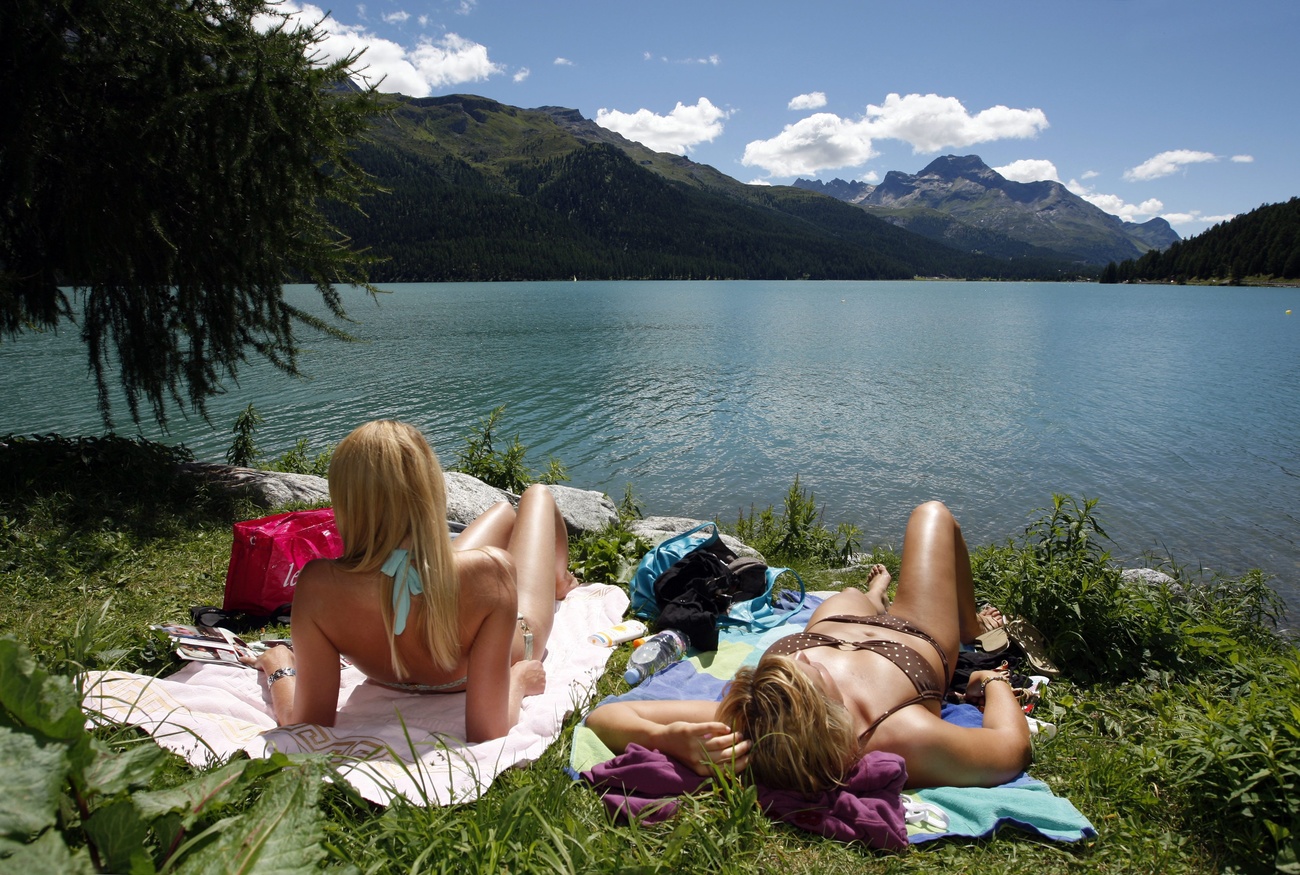
More
Is your bikini fish-friendly? Research reveals how fabrics shed microplastics
They suspect that fibres and plastic shed or dropped by wind- and kite-surfers on Lake Silvaplana may also end up in the water.
The team’s firm conviction is based partly on an earlier microplastics study carried out in the region by local student Anna Sidonia MaruggExternal link for her high school diploma. Her research, which won the 2020 Schweizer Jugend Forscht [Swiss Youth in Science] award, identified 22 different types of plastic in local lakes and rivers.
“We have this view that the Engadine is still very natural and very idyllic, so people don’t associate it with microplastic pollution,” explains Sidonia, who is participating in the ETH Zurich study. “But I think it’s something we should be concerned about because Lake Lunghin [the source of the River Inn] is one of the biggest European watersheds; its water flows into the Mediterranean, the Black Sea and the North Sea.”
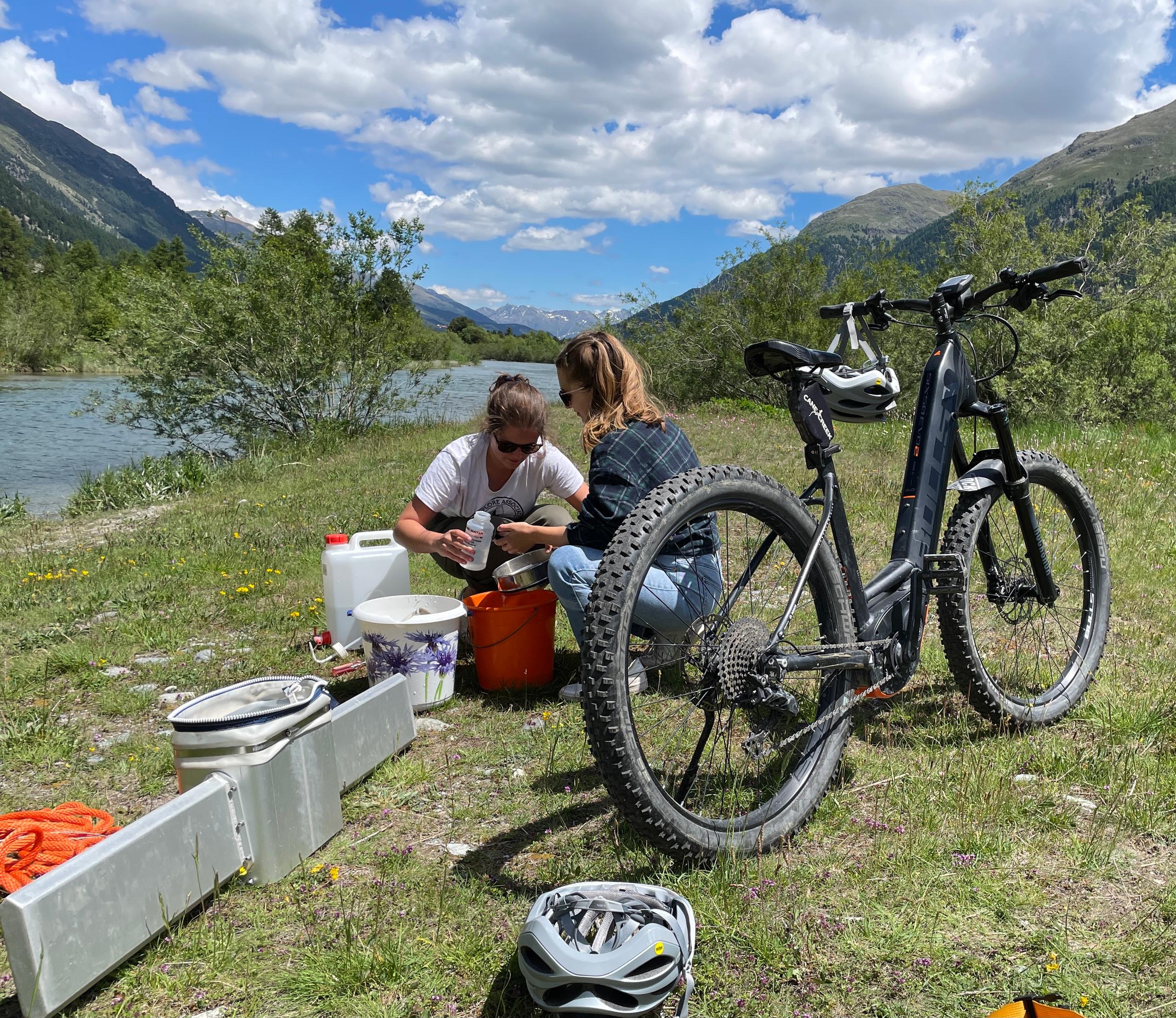
Digesting the sludge
At the end of their busy day, the students pack their gear ahead of a long train ride back to Zurich. The manta trawls are dissembled, and samples are carefully boxed up to be sent to the Swiss Federal Institute of Technology Lausanne (EPFL) for analysis.
There the samples go through a “digestion” stage where the organic material is broken down using potassium hydroxide or enzymes. The result is a soup that is filtered, heated and dried to get rid of excess water. An infrared spectrometer is used to analyse the remaining material.
“The device gives us a chemical breakdown of whether what is left is plastic or not. We are also able to know exactly what kind of plastic it is – whether it’s a fibre, fragment, pellet or particle,” explains Lehner.
The researcher has already taken a first visual look at the samples. He says he hasn’t seen any that jump out as being plastic.
“But if there is plastic it will probably be mostly fibres,” he notes. Covid-19 and limited tourist numbers last year could have had an impact on the results, he adds.
In June, a Franco-Swiss team of scientists collected samples from glacier streams in the Mont Blanc region to study microplastic pollution. The “Clean Mont Blanc” teamExternal link involved in the exploratory study left the mountain resort of Chamonix on June 2 to complete a 160-kilometre loop around Mont Blanc, crossing the French, Italian and Swiss borders. Samples were taken from the Trient, Tour, Argentière and Mer de Glace glaciers. They will be analysed at the Savoie Mont Blanc University in Chambery, France.
Exactly what kinds of plastic the researchers find in the Upper Engadine waters and how much is detected will become clearer in autumn when the results become available.
“Everyone here at Silvaplana who stops to talk to us tells that we are wasting our time and that we won’t find anything,” says Zurich researcher Helena Golling, emptying the contents of her manta net into a sieve. In the background, dozens of kite surfers race across the shimmering lake.
“But we really need to look into this issue to see what’s going on.”
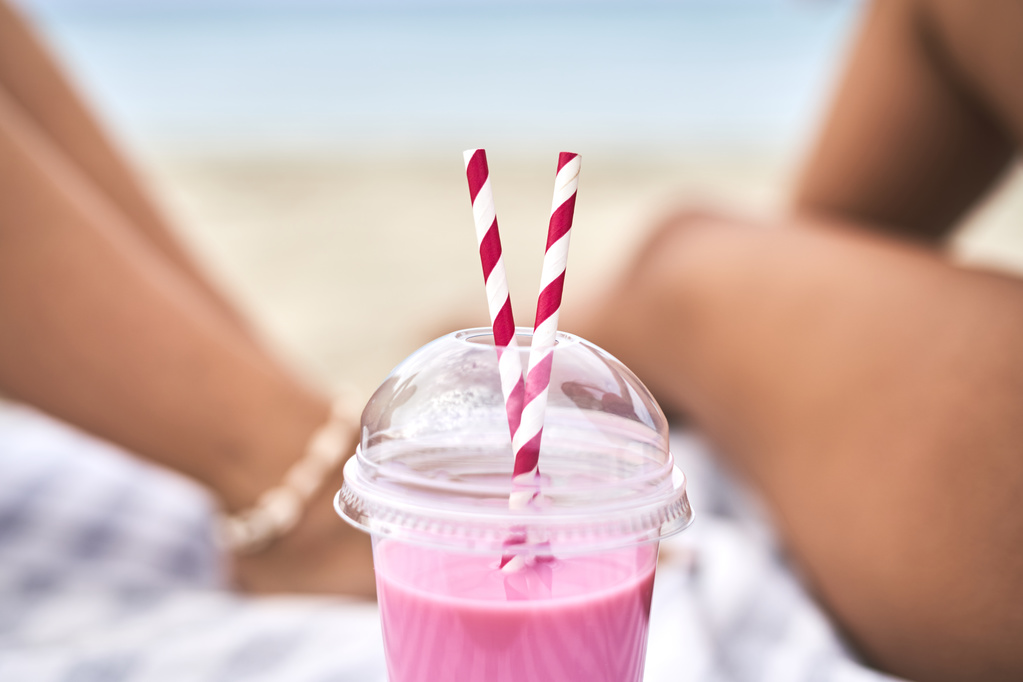
More
Swiss to keep sipping from single-use plastics as EU ban takes effect

In compliance with the JTI standards
More: SWI swissinfo.ch certified by the Journalism Trust Initiative









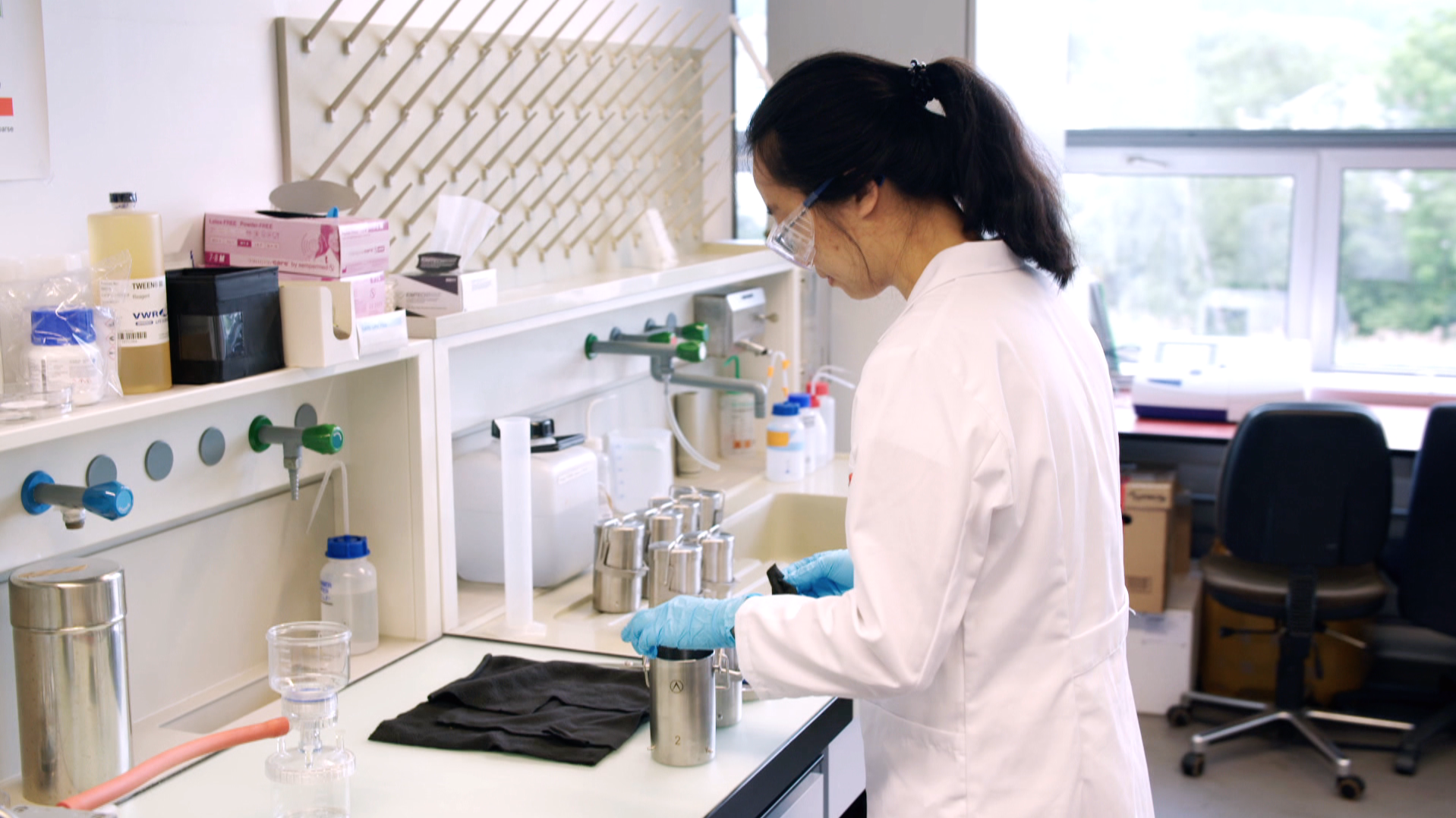

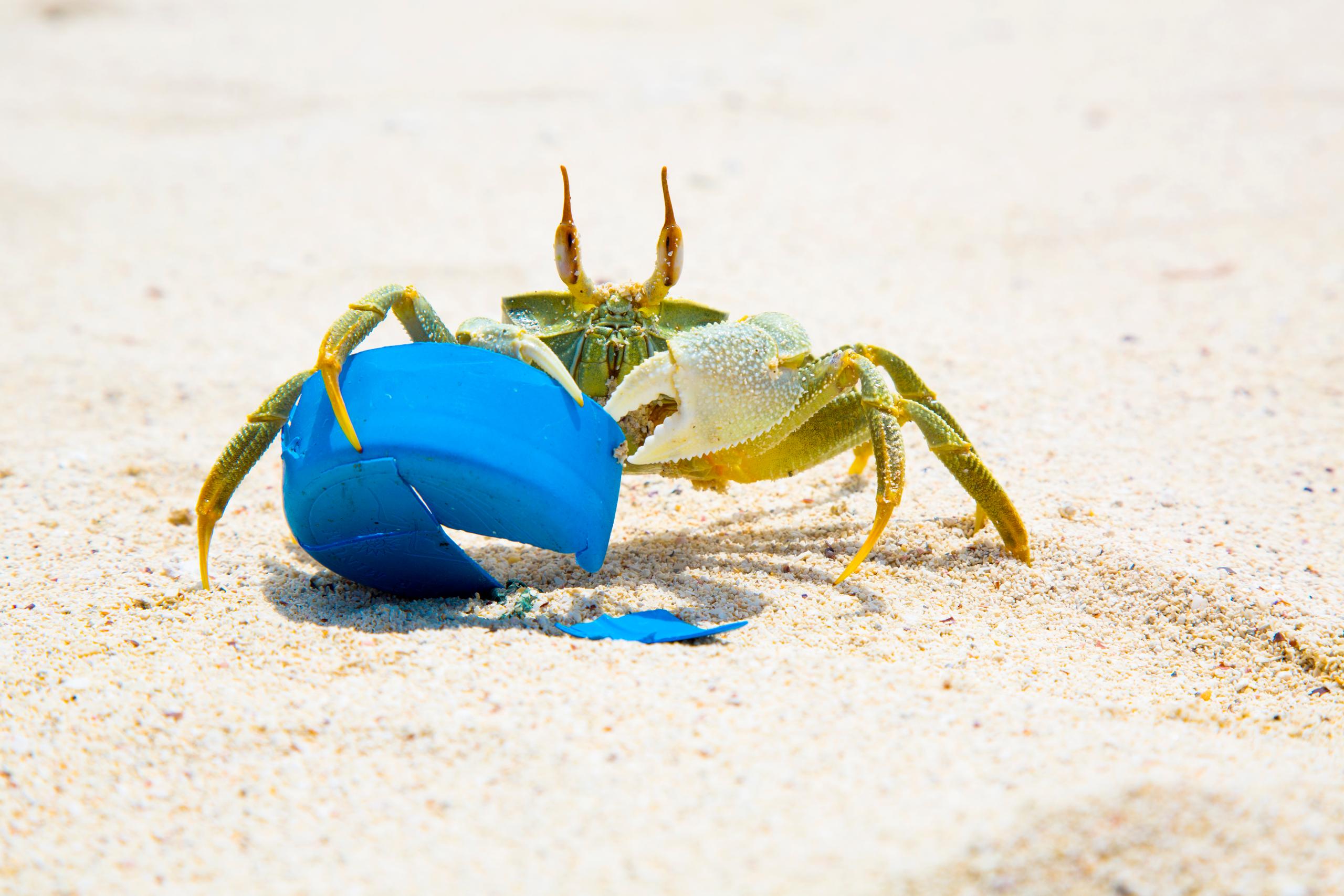
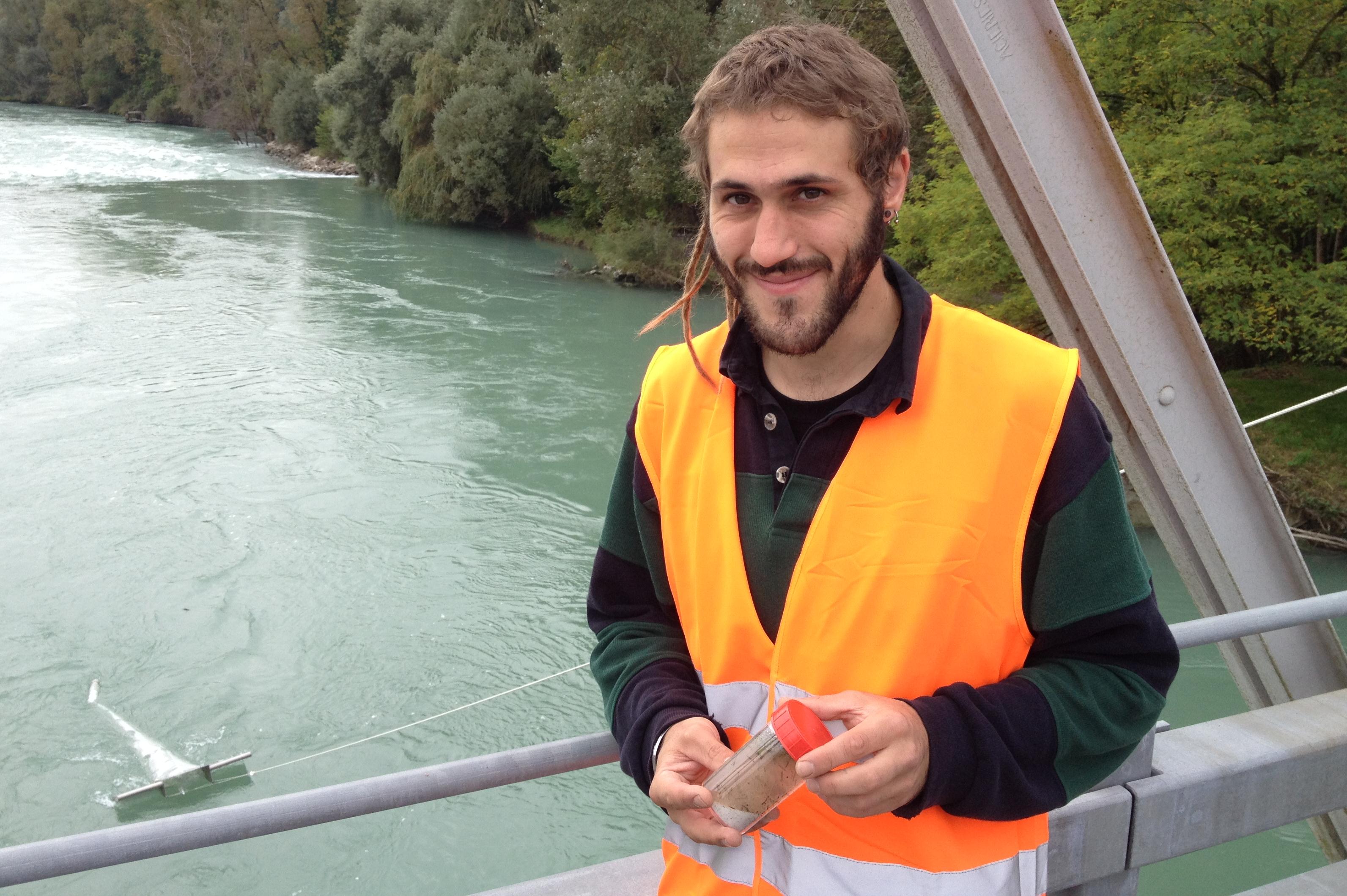
You can find an overview of ongoing debates with our journalists here . Please join us!
If you want to start a conversation about a topic raised in this article or want to report factual errors, email us at english@swissinfo.ch.